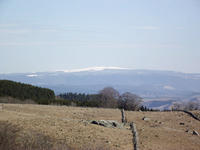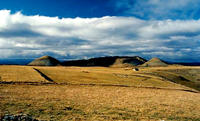You are in: Europe -> France -> The Causses and the ... , and traditional search or Image Gallery will yield results of this site only
The Causses and the Cévennes, Mediterranean agro-pastoral Cultural Landscape
| Site number: | 1153 |
|
| Type of site: | Cultural | |
| Date: | 11th century | |
| Date of Inscription: | 2011 | |
| Location: | Europe, France, Southern part of central France | |
Up to 75 images are shown here. Click on each for more details or on Image Gallery for more images.
| Description: | The 302,319 hectare property, in the southern part of central France, is a mountain landscape interspersed by deep valleys that is representative of the relationship between agro-pastoral systems and their biophysical environment, notably through drailles or drove roads. Villages and substantial stone farmhouses on deep terraces of the Causses reflect the organization of large abbeys from the 11th century. Mont Lozère, inside the property, is one of the last places where summer transhumance is still practiced. --WHMNet's description is from WHC Site, where additional information is available. | |
| The Cévennes (Occitan: Cevenas) are a range of mountains in south-central France, covering parts of the départements of Gard, Lozère, Ardèche, and Haute-Loire. The word Cévennes comes from the Gaulish Cebenna, which was Latinized by Julius Caesar to Cevenna. The Cévennes are named Cemmenon (Κέμμενων) in Strabo's Geographica. The average population density is 14/km². The average population density is 14/km². The Cévennes are a part of the Massif Central. They run from southwest (Montagne Noire) to northeast (Monts du Vivarais), with the highest point being the Mont Lozère (1702m). Another notable peak is the Mont Aigoual (1567m). The Loire and Allier flowing towards the Atlantic ocean, the Ardèche and tributary Chassezac, Cèze, the different Gardons to the Rhône, Vidourle, Hérault and Dourbie rivers to the sea source in the Cévennes. The region hosts Cévennes National Park, created in 1970 and the Parc Naturel Régional des Monts d'Ardèche. Two canyons are near the region: the Gorges de la Jonte (the Jonte River gorge) and the Gorges du Tarn (the Tarn River gorge). --Wikipedia. Text is available under the Creative Commons Attribution-ShareAlike License. | ||
| Source: | http://whc.unesco.org/en/list/1153 | |
| Reference: | 1. UNESCO World Heritage Center (http://whc.unesco.org/en/list/1153). 2. Wikipedia. | |





















